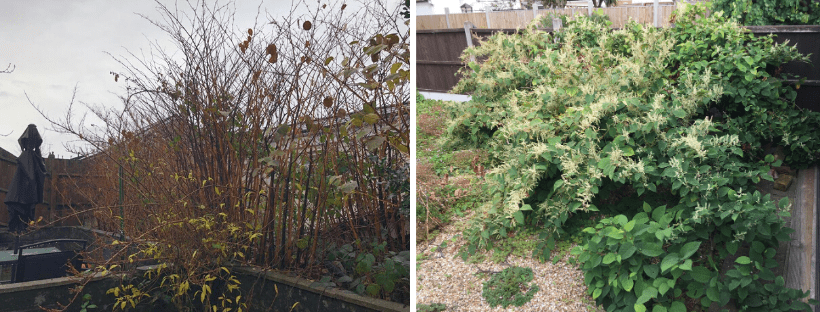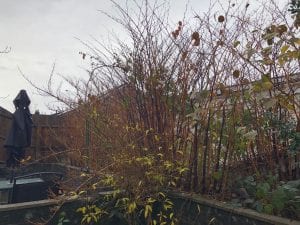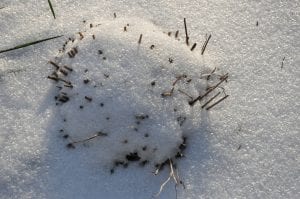
Looking for some pointers for how to spot Japanese Knotweed? The appearance of Japanese Knotweed will change with the seasons, so it is important you know what to look out for depending on the time of year. As experts in eliminating the invasive weed, we have put together a season by season checklist for you to go through when attempting to identify the plant.
If you suspect that you may have Knotweed growing on your property, whatever time of year it is, we do not recommend attempting to treat it yourself. Once you have identified it using the checklist below, call in a professional japanese knotweed removal service to avoid any further complications with your property or mortgage later down the line.
Identifying Japanese Knotweed in Spring

Like with many plants, spring is when Japanese Knotweed begins to shoot up from the ground. These shoots will have a red/purple tinge, grow very fast and resemble the appearance of thick asparagus stems. By late spring, you may see canes as high as 3 metres tall, due to the aggressive and rapid growth of the weed.
In the early stages of the season, the leaves will be slightly curled up and may also have the same red/purple colouring as the stems. However as summer gets nearer, these leaves will start to open up and become a lighter green colour.
Spring Checklist:
- Do the shoots have a red/purple tinge?
- Are the leaves curled up?
- Is the plant growing very tall in a short space of time?
Identifying Japanese Knotweed in Summer

By the time summer comes around, the tall canes will become more hollow and rather than asparagus stems, their appearance will now be more similar to bamboo. The leaves will be flat, large, heart shaped and green in colour. Upon close inspection you will be able to make out a zig zag pattern on the leaves, extending from the stem.
As summer progresses, you may notice clusters of white flowers starting to appear, hanging from the stalks.
Summer Checklist:
- Do the canes look similar to bamboo canes?
- Are the leaves green and heart shaped, with a zig zag pattern on them?
- Have creamy/white clusters of flowers started to appear?
Identifying Japanese Knotweed in Autumn

At the start of autumn, Japanese Knotweed will still have the white clusters of flowers and the green heart shaped leaves that are distinctive to summer. However as the season progresses, the leaves will begin to wilt and turn yellow. Typically in the early-mid stages of autumn, Knotweed will be around 2-3 metres in height.
As autumn draws to a close, the hollow bamboo like canes will start to turn to a dark shade of brown. The leaves, after they have turned yellow, may also start to get darker in colour as well.
Autumn Checklist:
- Have the heart shaped leaves turned yellow?
- Have the bamboo like canes turned dark brown?
- Is the plant roughly around 2-3 metres tall?
Identifying Japanese Knotweed in Winter

Japanese Knotweed lies dormant in winter, but do not let this fool you! It does not die off completely. As the first frost starts to appear, Japanese Knotweed leaves will turn brown (if they haven’t already) and eventually fall off the plant entirely. The canes will start to become very brittle, in some cases snapping and collapsing underneath each other.
Consequently, winter is probably the most difficult season to identify Knotweed. However, as mentioned above, do not fall into the trap of thinking that this means your troubles are gone. By the time spring comes round, the cycle starts all over again and shoots will start to grow through the dead canes (which can take years to decompose!).
Winter Checklist:
- Have the leaves turned brown and started falling off the plant?
- Have the canes become brittle and started to snap?
- Are there lots of dead canes on the floor that won’t decompose?

